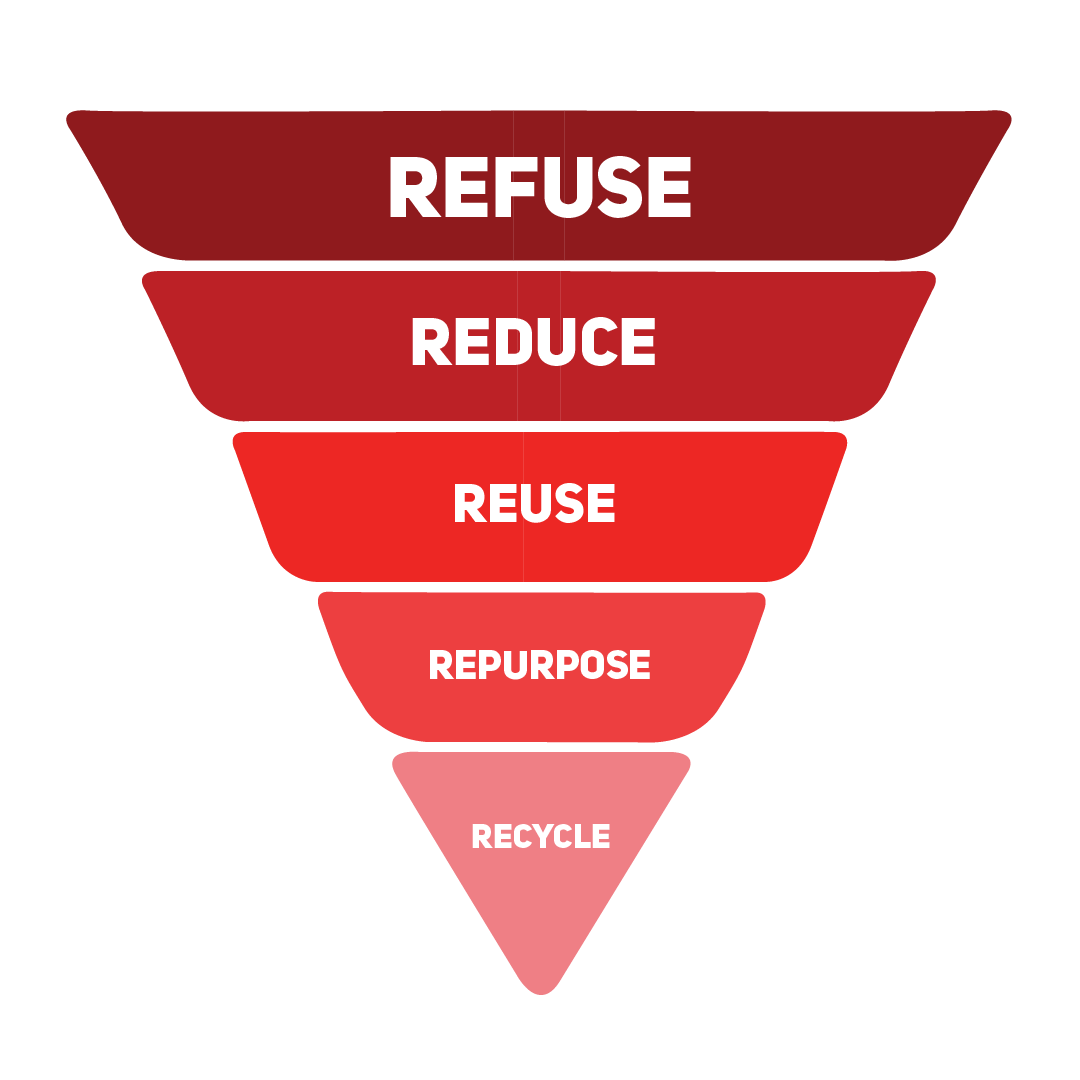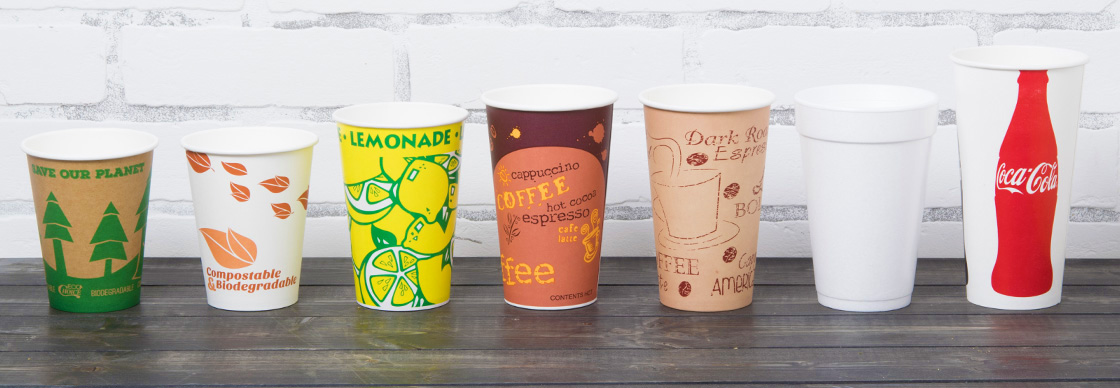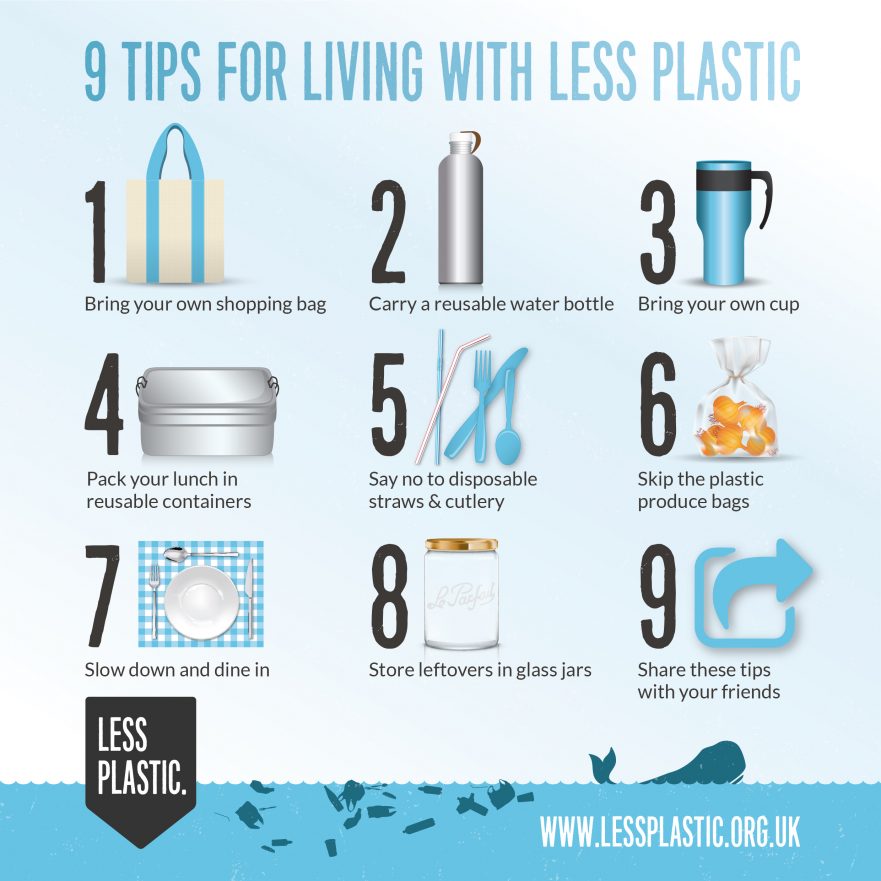Waste Recycling and Disposal
Let’s Talk Trash
BC is proud to be a leader in sustainable environmental management – with air and water quality that ranks among the highest in the world. Effective waste management procedures and solutions contribute a great deal to preserving our environment.
The Waste Discharge Regulation defines what industries, activities and operations require authorizations to discharge or release waste to the air, water, and land under the Environmental Management Act (EMA) in BC.
Zero Waste and the Circular Economy
Canadians dispose of more municipal solid waste per capita than any other country according to a Conference Board of Canada report. However, there is a positive business case for reducing the amount of waste we generate in British Columbia. Zero waste approaches aim to reduce and ultimately eliminate garbage.
The 5 R pollution prevention hierarchy is a useful planning tool for moving towards zero waste. Once all achievable opportunities at a higher level have been taken, only then should the next level be looked at.

For example, opportunities for recycling should be explored only after all opportunities for reduction and reuse of materials have been exhausted.
The pollution prevention hierarchy supports a circular economy approach which can create jobs, promote innovation that provides a competitive advantage and help to protect people and the environment. In a circular economy resources are never tossed, but instead are reused, recycled and reintroduced as new products. All with a focus on clean technology and energy efficiency.
The Garbage Economy
What is the future of garbage? What is a circular economy?
One Word – Plastics!
This clip is from a 1967 film titled, ‘The Graduate’, where investment advice is being offered to a recent University graduate.
Plastics and the Circular Economy
The New Plastics Economy aims to move away from the current ‘take, make, dispose’ plastics economy towards one based on circular economy principles. The vision for such a system is that plastics are kept in the economy and out of the environment.
Plastics 101
Once a completely natural product, much of today’s plastic is man-made and largely dependent upon fossil fuels. From polymers to nurdles, learn how plastic is created and what we can do to slow the lasting repercussions this material will have on both our planet and our lives.
Single-Use Item Reduction Strategy
Using public input, the city of Vancouver created a strategy to dramatically reduce waste from single-use items. The Single-Use Item Reduction Strategy includes actions from 2018 until the year 2025 to reduce waste from:
- Plastic and paper shopping bags
- Polystyrene foam cups and take-out containers
- Disposable hot and cold drink cups
- Take-out food containers
- Disposable straws and utensil
We all have a role to play in ensuring this strategy succeeds at reducing waste from single-use items, enabling innovation, and driving further zero-waste progress. We can’t get there alone.
Despite their convenience, single-use items:
- Use a significant amount of resources
- Are often not reused or recycled
- Take up valuable space in our landfill
- Impact our environment long after they’re used
- Cost Vancouver taxpayers about $2.5 million per year to collect from public waste bins and to clean up as litter in our parks, streets, and green spaces
Foam Cups and Take-Out Containers
- Expanded polystyrene foam (sometimes called “thermal”) cups and take-out containers are only recyclable if they are not contaminated with leftover food or mixed with other materials like paper, plastics, glass, or grit.
- The only option for recycling foam cups and containers in Vancouver is to drop them off at depots or stores, however, only 6% of Vancouver residents say they will take foam containers to a recycling depot.
- 1% of large litter on Vancouver streets is made of polystyrene cups and containers.
- Small foam pieces made up 9% of items collected in Vancouver shoreline cleanups in 2016.
Plastic & Paper Bags
- Around 2 million plastic shopping bags are disposed in the garbage in Vancouver each week (63% are reused as garbage bags).
- Plastic bags make up 3% of shoreline litter and 2% of large litter items in Vancouver streets, parks, and public spaces.
- Paper bags make up 1% of large street litter items.
- Plastic bags harm marine life and are made using non-renewable fossil fuels.
- It can take anywhere from 10-10,000 years for a plastic shopping bag to decompose.
- Paper bags actually cause more harmful greenhouse gas emissions over their lifetime than plastic bags because of manufacturing processes and they are heavier to transport.

Straws and Utensils
- Canadians throw out approximately 57 million plastic straws a day.
- Plastic straws and stir sticks make up about 3% of shoreline litter in Vancouver.
- Plastic straws and utensils can fall through screens on recycling sorting lines that are designed to remove contaminants.
- Plastic straws and utensils have a significant potential to contaminate compost. Compost facilities have difficulties processing compostable plastic straws and utensils because they take a long time to break down.
- Plastic straws and utensils have negative impacts on marine life and the environment.
Disposable Cups
- Disposable cups include polycoat paper cups (such as coffee cups) and plastic cups. 2.6 million polycoat paper cups are thrown in the trash in Vancouver every week.
- Nearly 50% of garbage collected from public waste bins are disposable cups and take-out containers.
- 22% of litter on Vancouver streets are disposable cups, lids, and sleeves.
- Recycle BC accepts polycoat paper cups in its household and apartment recycling program, but many businesses do not accept them because their waste collection companies struggle to access recycling markets.

Are You Eating Plastics?
This novel 3-D animation dives into how our consumption of plastics has affected marine species deaths and increased human health risks, and it explores possible long-term solutions. Motion graphic artist Andreas Tanner uses his compelling infographics to educate viewers on all aspects of plastic production, consumption, and breakdown. “Due to particular currents in the Pacific Ocean, a new continent has been born: a mass of plastic waste the size of Europe.” Tanner also offers ideas for alternative and sustainable buying habits to reduce our reliance on plastic.
Trash Rules Everything Around Me
9 Tips for Using Less Plastics
*DISCUSS WITH YOUR NEIGHBOUR – WHICH OF THE 9 DO YOU DO?*

How Recycling Works
Explore what happens to your stuff after you toss it into the little green bin with the arrows on it.
CLASS ACTIVITY
Now that we have learned how plastics effect our environment and how important recycling is, let’s go see what is in our very own waste disposal. Take a pair of gloves and see how well Riverside disposes properly of waste! Discuss in small groups what you saw. Do we do a good job of organizing and recycling? Why or why not? What are some strategies that we as a school can do to improve our recycling program and raise awareness with our students? Be prepared to share your answers.
Complete pages 3-9 in the Learning Guide

